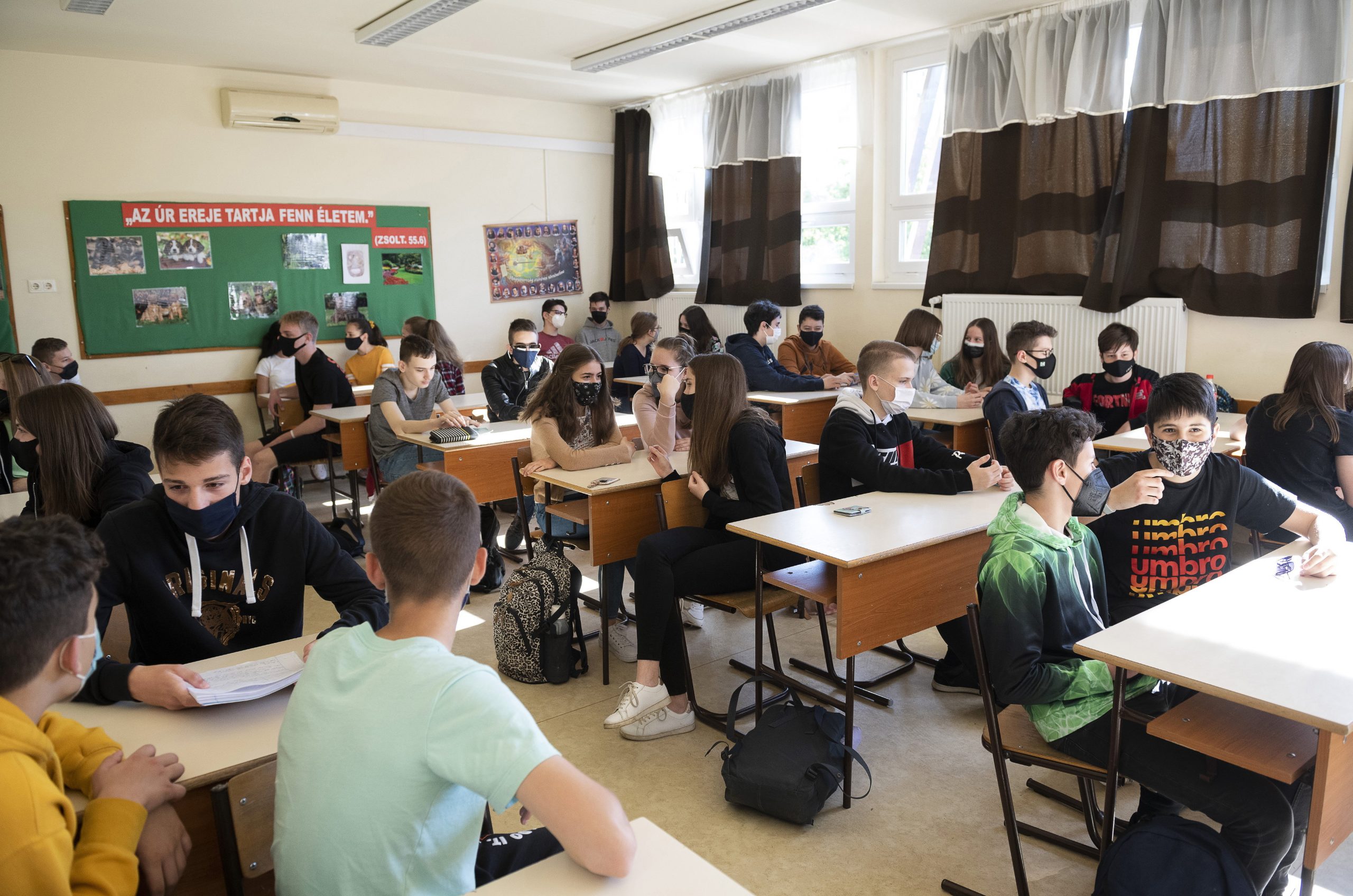
In recent years, more and more people have been sounding the alarm about the rising teacher shortage in Hungary. The Teachers’ Trade Union (PSZ) estimates that there are currently around 12,000 full-time teaching vacancies in public education, but the number will likely grow in the coming years. The government, however, claims the problem does not exist and the vacant positions are simply the result of teachers’ periodic search for jobs.
Nearly 3,500 primary and secondary school teachers and almost a thousand kindergarten teaching positions are vacant according to Hungary’s public sector job portal, leftist daily Népszava reported. Many places are unable to fill the shortage even though they would immediately recruit teachers of any qualification.
A lot of positions are not even advertised, and are instead filled by reassigning work and employing substitute teachers; therefore, some experts suggest that the school system could be short of more than 10,000 teachers.
Related article
Teacher Shortage in Hungarian Public Education: At Least 1700 are Needed
According to Népszava, less than one week before the start of the new school year, more than 1700 job listings for teachers can be found on the governmental job search portal. There are schools in which only one vacancy can be found, but there are schools which are still searching for multiple teachers. According to […]Continue reading
According to Népszava, Budapest has the greatest shortage of teachers, with 454 open positions, while in Pest County there are around 500 vacant positions in total. But a teacher shortage presents a serious problem not only for cities and towns.
The mayor of a small village in southwestern Hungary told the paper that it is very difficult to attract young teachers to rural places, not only because of a lesser social life, but also because many of the local students come from disadvantaged families, which raises new problems.
According to Gábor Gosztonyi, vice-president of the Teachers’ Trade Union (PSZ), the problem of filling vacancies in rural and small schools is growing, which the union believes could be solved by a rapid permanent pay increase, decreasing workloads, and creating a stable career path.
Low wages, high working hours
A former 2019 survey of the Teachers’ Trade Union (PSZ) found that the average weekly number of working hours of a teacher in Hungary is 56.
“Teachers are stretched to the limit, and Hungary has the highest teaching hours in the European Union,” said Tamás Totyik, the other vice-president of PSZ.
According to the trade union, there is currently a shortage of around 12,000 full-time teachers in public education.
In addition, PSZ says that due to retirement and career changes, the current national teaching staff of 146,000 (including nursery, primary, and secondary schools) will fall by around 22,000 in the next five years.
Related article
Teachers' Day: MSZP and LMP Pledge to Raise Teachers' Wages After Elections
The coronavirus emergency situation highlighted the importance of having many dedicated, creative teachers in the country, they said.Continue reading
PSZ warns that it would take at least 7-8 years to replace teachers, but as long as the gross monthly wage of starting teachers is HUF 230,000 (EUR 651), while the gross salary of a beginner in the competitive sector is HUF 340,000, (EUR 963) there is no hope of change.
“The salary of a single parent teacher who has been in the profession for 10 years, according to 2019 calculations, is below the living wage, even with all the allowances included,” Totyik says.
The vice president of PSZ believes that the alarm bell should have been sounded long ago, because if there is no change, public education will be at the brink of collapse in four or five years.
Gov’t deems teacher shortage a myth
However, the government says there is actually no problem at hand and that the few thousand vacancies are perfectly normal.
“It is perfectly normal to advertise three to five thousand job positions a year,” stated Zsolt Maruzsa, the State Secretary for public education, to pro-government daily, Magyar Nemzet.
Maruzsa says the explanation of the issue is simple: “About five to six thousand people graduate from universities every year, they look for job opportunities during the summer break, while teachers already working in the field tend to change institutions that time of the year as well.” According to the state secretary, the thousands of vacancies are completely normal in a public education and vocational training sector with 160-170,000 people in employment.
The President of the Klebelsberg Center (KLIK), the ministerial agency responsible for public education, had a similar response to the concerns about the shortage of teachers.
In a recent interview, Gabriella Hajnal said: “in vain do they [the opposition press] write down the number of vacancies, claiming that they think there is a lack of more than 2,000 chemistry teachers, but this data does not cover the reality, because not every school needs a chemistry teacher.”
According to Hajnal, this is particularly true in the case of schools with low pupil numbers, where there is only one class per year group, thus four or five schools can simultaneously provide the number of hours needed for a single chemistry teacher to fill the full-time post.
In reaction, Tamás Totyik told Hvg that this solution, the so-called “traveling teachers” can be used for awhile to ensure that all institutions have enough teachers, but the system has many disadvantages, and the heads of institutions don’t like the solution either.
These teachers cannot help the teaching staff with on-call duties, substitutions, nor can they take on the role of the class teacher, one teacher told Hvg.
Featured photo illustration by Attila Balázs/MTI


